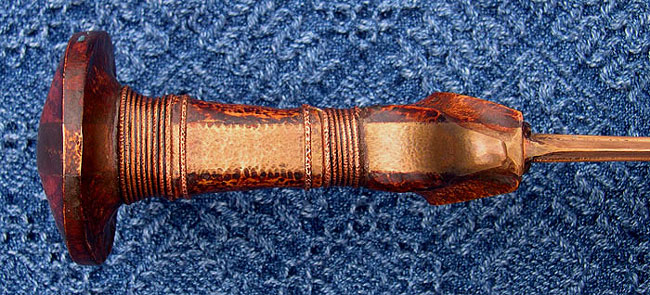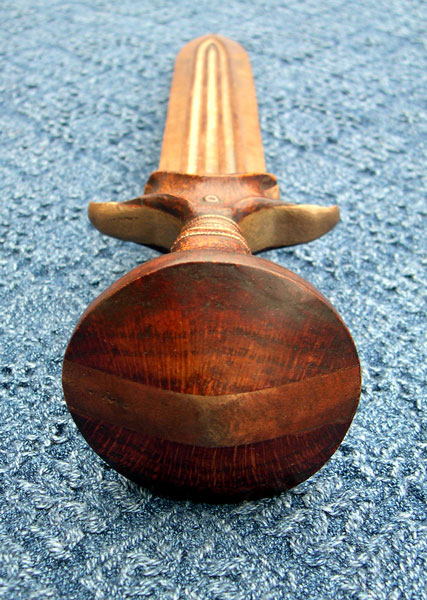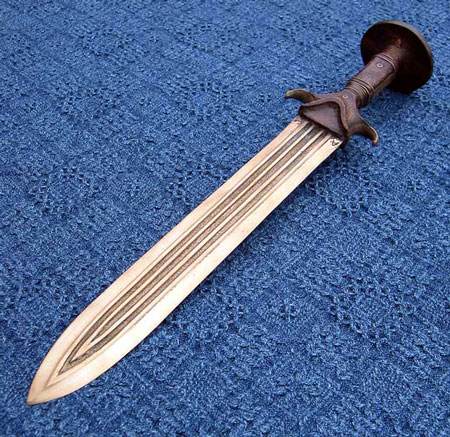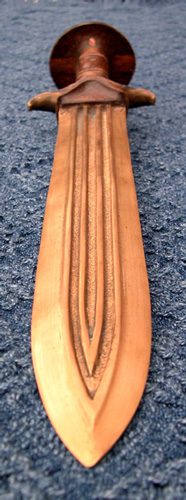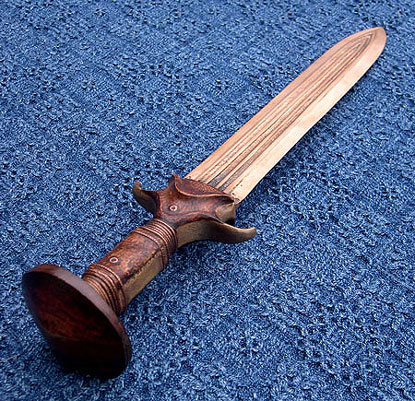Posts: 820 Location: Texas
Mon 10 May, 2004 9:22 pm
Reconstructing the grip plates and pommel was an interesting project. In trying to find an accurate
design, my two points of reference were archeological finds and the shape of my hand. I first found
as many pictures and drawings of original Aegean bronze swords as I could. Many of these finds
have rivets still attached. Though all of the organic parts of the hilt are long gone (in most cases)
the ends of the rivets do give a point of reference for the surface of the grip plates. The original
Woodhouse dagger has rivet holes through the tang to show the placement and relative size
of the rivets.
Although there is no cooper wire binding left on the Woodhouse dagger, I have added it because it
has been found (occasionally) on similar swords. Also I believe the narrowing of the tang above and
below the grip would make room for such binding. And, with the binding partially filling these indentions,
the grip seemed more comfortable. Also, many contemporary swords have grooves and linear patterns
cut in the side of the tang, which may mimic such older bindings. And lastly, there is a small groove on
the side of the tang at either end of the grip. I have interpreted these grooves as a channel for a single
strand of the wire binding to give a little extra hold.
The problem with the earliest Bronze Daggers and Rapier-Type Swords was that they had no tang.
The butt of the blade was simply riveted to a wooden handle. They were designed for thrusting.
You would just punch it into your opponent. However in the heat of battle with not enough room to
get a good thrust, it was natural to swing side arm or from above into your opponent. Rivets are not
going to hold under such torque. Many of the rivets of these early thrusting type swords are bent and
ripped out of the sides of the blades as testimony to such inappropriate hacking with a thrusting blade.
So swords with tangs developed… and with them the many strategies for trying to get the grip plates to
stay on the tangs. This version of the Sword of
Odysseus shows three of the strategies:
1. Riveting the grip plates to the tang
2. Crimp the sharp flanged edges of the grip and pommel into the edges of the wooden grip plates.
3. Bind the grip plates to the tang with wire
ks
 Attachment: 91.99 KB
Attachment: 91.99 KB
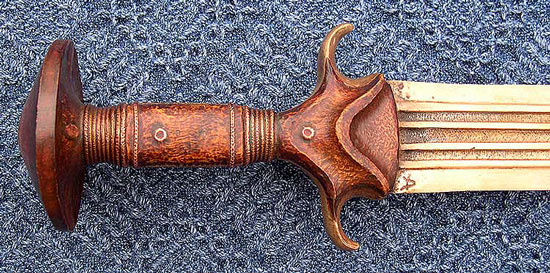
 Attachment: 97.87 KB
Attachment: 97.87 KB
